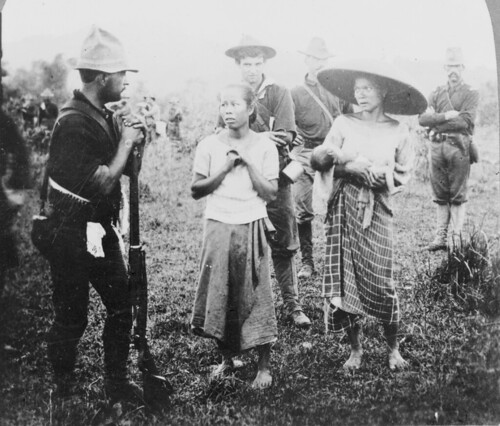
The American rule was characterized by a rapid progress in self government, in education, in science, and in economic development. Schools, hospitals, and roads were built; new industries were created. A new vigorous and progressive civilization was introduced.
Despite the changes, the Spanish regime had left enduring traits on the Filipino people which cannot be easily changed. During the American occupation (and even up to the present time), the influences of Spanish culture were discernible in certain aspects of Philippine life—the economic, the religious, and the social.
Economically, the effects of the feudal system of landholding largely remained. In fact, American capitalism abetted the concentration of wealth in the hands of a few people. The country folk, who have always depended on the produce of the soil, have stayed in chronic poverty, denied substantial education and the benefits of modern culture. American industry built better roads, faster means of communication, factories, and town, but it failed to modernize farming as a whole during that period. Antiquated methods of agriculture are still widely used even today, with the hand plow and the water buffalo as the standard farm equipment. With a little exception, the rural community has preserved the old ways of livelihood, the peasant folk still engaged in the same type of daily activities.

In the realm of religion, the traditions of the Catholic Church have been largely preserved. Religious festivals are still occasions for the devout to flock to church and hold elaborate processions. While the American regime fostered the growth of various Christian sects and denominations, notably Protestantism, the Catholic religion has continued to be the dominant influence in the lives of the masses. The Philippines remain to be a predominantly Marian country up to the present.

image source
The Americans instituted a democratic system of education which raised the general social level. The stress on hygiene and sanitation, urbanized living conditions, and material progress improved the health and living conditions of the people at that period, but it has also encouraged unhealthful crowding in the cities, and, to some extent, the neglect of the soil. With education many folk superstitions disappeared. The newspaper, the radio, the moving picture, and television made the rural people better informed of the world about them. English, used as the medium of instruction, soon became the popular language, superseding Spanish, which, however, continued to serve as an alternate tongue. Eventually Pilipino or Filipino, the term applied to the national language, has become widely used in mass media and everyday discourse.
As a result of the new education, folk culture as a whole became remote to the experience of the ordinary person. This was also the period of the rise of the middle class Filipino.

The United States stayed in the Philippines for almost half a century, interrupted only by the brief Japanese occupation from 1942-45. In 1946, the Philippines became an independent republic, although the American naval and air bases still remained in the Philippines for many more decades. Up to the present, the USA and the Philippines continue to foster a close socio-political relationship.

© 2010 Athena Goodlight